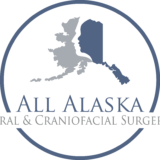What are the symptoms of Craniosynostosis?
Given the fact that craniosynostosis interferes with normal skull growth due to premature closure of cranial “sutures” – the fibrous joints between the bony plates in the head – a change in the shape of the child’s head or face will most likely be the first symptom of the disorder. In many cases, it will be the only symptom displayed by the child.
 Exactly what you might observe will depend on how many sutures have closed prematurely and at what point in brain development they have closed. In most cases, the misshapen skull will begin to become apparent shortly after the fusion occurs, typically within the first few months of life. The fontanel – your baby’s “soft spot” – may close up all together or feel abnormal.
Exactly what you might observe will depend on how many sutures have closed prematurely and at what point in brain development they have closed. In most cases, the misshapen skull will begin to become apparent shortly after the fusion occurs, typically within the first few months of life. The fontanel – your baby’s “soft spot” – may close up all together or feel abnormal.
In addition to changes in skull shape, some children may have other more concerning medical findings, which include:
- Prominent scalp veins that bulge or appear darker than usual
- Increasing head circumference
- Drowsiness or issues with lack of alertness
- Irritability
- High-pitched crying
- No desire to eat or change in eating habits
- Projectile vomiting
- Bulging eyes and the inability to look upward while facing forward
- Seizures
- Developmental delays
How is a diagnosis made?
An observant pediatrician who is familiar with your child may notice the signs of craniosynostosis before parents are aware of any abnormality. At regular pediatric check-ups, head circumference along with weight and height is usually measured and recorded.
As an abnormally increasing head circumference is one of the symptoms of the disorder, it is also often the first clue for the pediatrician that something is amiss. Further, the pediatrician may notice areas of unique “ridging”, “bulging” or flat spots on your child’s head, prompting further testing or referral to a craniofacial specialist.
In order to confirm a diagnosis of craniosynostosis, tests will be ordered, which may include:
- Head x-rays – These will be done in order to observe the bones and tissues of the head and to confirm that premature fusion has indeed occurred. There is minimal radiation dose associated with “plain” x-ray imaging.
- Ultrasound – This study is used to help diagnose premature fusion of the cranial sutures and can also detect some abnormalities of the underlying brain. There is no radiation involved with ultrasound imaging.
- CT scan – In most cases, a CT scan will be ordered simply because it provides more specific details than a traditional x-ray. While head CT provides exceptional imaging for diagnostic purposes, and can generally be tolerated by an awake infant, there is a greater amount of radiation involved with this study.
- MRI – This study is best for obtaining detailed images of the brain but can also be used to assist in diagnosis of premature fusion of the skull bones. There is no radiation associated with MRI however, young children and infants require sedation for this study.
Other than radiation, where noted, the aforementioned studies are painless and non-invasive for your child.
It’s likely that the pediatrician or specialist will also ask for a prenatal and birth history of the child as well as a family history in order to determine whether there is a genetic history of craniosynostosis or any other head or face abnormalities. If it is determined to be a hereditary disorder, doctors may suggest genetic counseling for the parents before they proceed with any further pregnancies.
How is Craniosynostosis treated?
In general, surgery is the preferred course of treatment for a child with craniosynostosis. Surgery is completed by both a craniofacial surgeon and a neurosurgeon and is aimed at correcting skull and facial deformities. In some more severe cases, surgery is also crucial for alleviating increased pressure around the brain that can cause neurological complications. Surgery to correct craniosynostosis is well-documented in the medical literature, with overwhelmingly positive outcomes.
Most procedures are scheduled for between 3 and 8 months of age, depending – of course – on when the disorder is detected and the overall health of the child. It is recommended that craniosynostosis surgery be completed by the age of 1, where possible, simply because the bones remain soft and may not have fused yet at other sutures. That makes them easy to work with and lessens the possibility of complications. In rare occasions, if the problem is severe, surgery may be suggested prior to 3 months of age.
A hospital stay will be required so that the child can be closely monitored after the surgery in case of complications. All post-operative issues will be promptly evaluated by the surgeons and health care team. The child will be released when it is deemed medically appropriate though he or she will require additional follow-ups to confirm uneventful healing and monitor for normal head growth.
